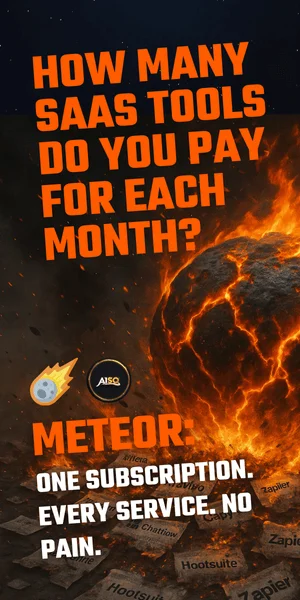Trying to get your name out there and build trust with a bigger audience? One smart way to do that is through guest posting for exposure. It’s simple: you write helpful content for other websites, and in return, you get your name in front of new readers. Whether you’re growing a blog, building a business, or just want more people to know what you do, guest posting can open doors. But it’s not just about writing and hoping for the best—you need a plan. This article breaks down clear tips that actually help you get noticed and build real connections.
Identify High-Authority Websites in Your Niche
Start by figuring out where your target audience already spends time. Look for websites that publish content related to your field and have an active readership. These sites usually have strong domain authority, steady traffic, and a good reputation. Posting on them means more people will see your content — especially the right kind of people.
Check how often the site updates its blog or news section. Frequent posts can mean they’re open to new contributors. Scan their existing articles to make sure they accept guest submissions and cover topics close to what you want to write about.
Use tools like Moz’s Domain Authority checker or Ahrefs’ Site Explorer to get insights into a website’s strength. A higher score suggests better chances of gaining visibility through backlinks and shares. This helps boost your presence in search results without needing your own platform.
Look at who else is contributing to the site. If names you recognize from your industry show up often, that’s a good sign you’re in the right place. It also means readers likely trust what’s published there — which adds weight when they see your name too.
Choosing high-authority platforms isn’t just about SEO gains either. It builds trust with potential clients, partners, or followers who come across your article while browsing those sources.
If you’re aiming for guest posting for exposure, these platforms give you a solid head start without needing to manage a personal blog or website first.
There’s even a free course called SEO Without a Blog that walks you through how to rank on Google using third-party sites like these — all without setting up anything technical yourself. The lessons go step-by-step so it’s easy to follow along even if you’re just getting started with online publishing or affiliate marketing.
Want help finding strong platforms and ranking well without running your own site? Create My Free Account & Start Learning!
Craft Personalized Pitches That Stand Out
When you’re trying to get your content published on someone else’s site, the first step is reaching out. But sending the same message to every blog or editor won’t get you far. People can tell when you’ve copied and pasted a template. If you want to make real progress with guest posting for exposure, tailor each pitch.
Start by reading through the blog or website where you want to post. Look at their recent articles and check how they talk to their readers. This helps you understand what kind of content they like and what topics they usually cover. When writing your pitch, mention a specific article that caught your attention. Let them know why it stood out to you.
Next, explain how your idea fits into their platform. Don’t just say “I can write about marketing.” Instead, offer a topic that matches what their audience already enjoys but adds something new or useful. Keep things short and direct—no fluff.
Also, show that you’re not just looking for a quick link back to your page. Editors prefer contributors who care about helping their readers learn something useful or solve a problem.
If you’re still learning how to bring more eyes to your content without running your own site, there’s an easy way to improve this skill set even more. There’s a free course called SEO Without a Blog – How to Rank on Google via 3rd Party Platforms. It walks you through using other people’s platforms (like blogs that accept guest posts) so that you build trust online without managing a full website yourself.
You’ll find clear steps on growing visibility and earning through affiliate links—all while keeping things simple and focused on value.
Want help improving how you reach new audiences? Create My Free Account & Start Learning!
Focus on Quality Over Quantity
When it comes to guest posting for exposure, it’s easy to think that more posts mean more reach. But posting just for the sake of volume won’t help if the content doesn’t offer real value or appear on trusted websites. Instead of sending the same article to dozens of sites, aim to publish fewer but stronger pieces on platforms that already have a loyal audience.
Choosing the right site matters more than how many you pitch. A single post on a well-known platform can bring more traffic and trust than ten posts on low-traffic blogs. People tend to engage more when they find your content on a site they already read and trust. That kind of attention is harder to earn with bulk publishing.
Also, high-quality content gets shared more often, builds your name faster, and stays useful for longer. It shows that you respect your readers’ time and care about what you publish. That’s what builds real credibility. You don’t have to be a pro writer—you just need to share helpful, clear, and honest insights. Focus on solving a problem or answering a common question in your field.
If you’re unsure where to start or don’t own a website, you can still rank on Google by using strong third-party platforms. There’s a free course called SEO Without a Blog – How to Rank on Google via 3rd Party Platforms that walks you through this. It gives you a clear plan for building trust and growing your audience without needing your own site. You’ll also learn how to earn through affiliate marketing while keeping things simple.
Want to take the next step? Create My Free Account & Start Learning!
Use Guest Posting for Exposure Strategically
Choosing where to post matters. Not every site will help your brand grow. Focus on platforms that match what you do and who you want to reach. This helps you speak to the right people and keeps your message clear.
Before writing, check if the site’s audience fits your goals. Look at their past content, tone, and how readers engage with it. If their readers care about topics like yours, it’s a strong match. It’s not just about traffic numbers — it’s about reaching people who care about what you offer.
Also think beyond one-time posts. Aim for places where you can contribute more than once or build relationships with editors or writers there. That kind of consistency builds trust over time.
Guest posting for exposure works best when you’re selective and focused. Publishing on random sites won’t move the needle much. Go after ones that have good search rankings or appear high in Google results for terms related to your topic.
If you’re unsure how to find these kinds of platforms or want help getting started without managing a full website, there’s a free course called SEO Without a Blog. It teaches how to show up in Google searches by using trusted third-party sites — all without setting up your own blog or domain name.
The course breaks down how to use authority sites effectively, which lines up well with making smart guest posting choices too. You’ll learn ways to get seen online while also building credibility through real strategies anyone can follow.
Want practical steps that save time? Create My Free Account & Start Learning!
Include a Compelling Author Bio With a Clear Call-to-Action
Your author bio is often the only place where you get to talk about yourself on someone else’s site. Use that space wisely. When guest posting for exposure, you’re not just sharing helpful info—you’re also building trust and showing people why they should follow you.
Start by making it clear who you help and what you do. Keep it short but specific. For example, say something like, “I help small business owners grow their reach through simple SEO tactics.” This tells readers what to expect from your content and why they might want more from you.
Next, add one strong link. Don’t overload your bio with multiple URLs or social handles that pull attention in ten directions. Choose one goal—whether it’s getting newsletter signups, driving traffic to your main offer, or sending visitors to a lead magnet—and stick with it.
If you’re still figuring out how to grow without running your own blog or website, there’s a free course inside Education Cloud PLUS that can help: SEO Without a Blog – How to Rank on Google via 3rd Party Platforms. It shows how using platforms with built-in authority can boost your online presence fast. The lessons guide you step-by-step so you’re not left guessing what works.
When adding this kind of value-driven link in your bio—like pointing readers toward expert-led learning—it gives them something useful while helping you stay connected beyond the article itself.
Don’t forget the call-to-action at the end of your bio. Something like “Want results without running a full website?” works well because it’s direct and focused on reader benefit.
A good author bio isn’t just filler text—it’s a tool for deeper engagement after someone finishes reading your post. Make it count by being clear about who you serve and giving readers one easy next step to take if they want more from you.
Promote Your Guest Posts Across Your Channels
Once your guest post goes live, don’t just leave it sitting there. Share it everywhere you can. Post the link on your social media profiles. Include it in your email newsletter. Add it to your LinkedIn or Twitter bio for a few days. The more places you share it, the more people will see it.
You’ve already done the hard part — writing the post and getting it published on a trusted site. Now it’s time to put it in front of your audience. Not everyone follows the blog where your post appears. But your followers already know you, so they’re more likely to click and read. Sharing your post across your own channels helps drive traffic back to the site, which can also boost your visibility with the blog owner.
Don’t stop at one tweet or one email. Break the post into smaller points and share those over time. Use quotes, stats, or questions from the article to spark conversation. This keeps your content working for you long after it’s published.
If you’re using guest posting for exposure, this step is key. You’re not just writing for someone else’s audience — you’re expanding your own reach. Sharing across your platforms connects both groups and helps build your reputation. It also shows that you’re active and involved, which can lead to more opportunities.
Want to learn how to grow your reach without even running your own site? The SEO Without a Blog free course walks you through how to use popular platforms to show up on Google. It’s all text-based and gives you steps you can follow right away. You’ll learn how to build trust, get found, and even earn from affiliate links — all without needing a blog of your own.
👉 Create My Free Account & Start Learning!
Level Up Your Guest Posting Strategy for Lasting Results
By now, you’ve seen how guest posting for exposure can be a game-changer when done with intention. From targeting high-authority sites in your niche to crafting standout pitches and maximizing every post with smart promotion, each step plays a role in expanding your reach and building credibility. Prioritizing quality over quantity ensures your efforts truly pay off, especially when paired with a compelling author bio that drives action.
Want to take things further without the hassle of running your own site? Learn how to rank on Google using trusted platforms by diving into this free Education Cloud PLUS course: Create My Free Account & Start Learning!






